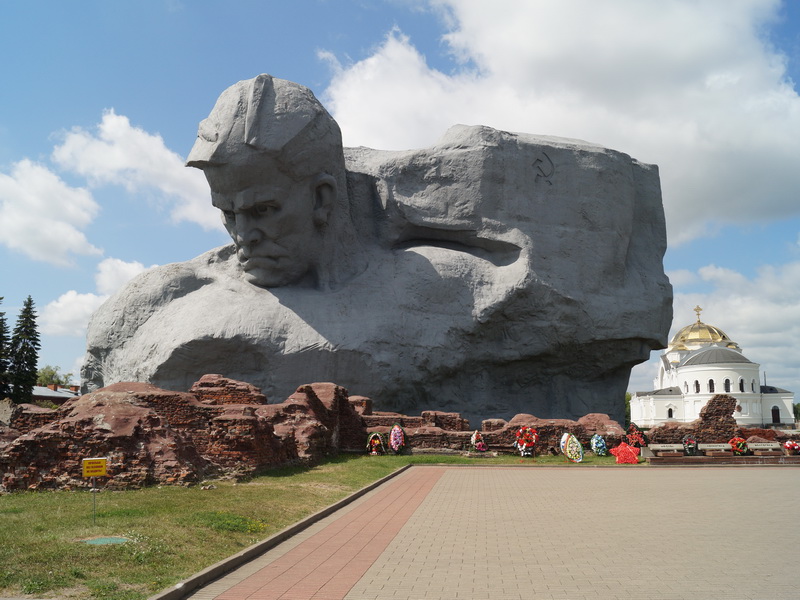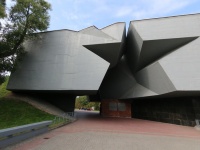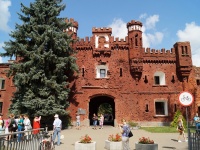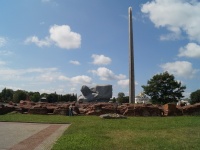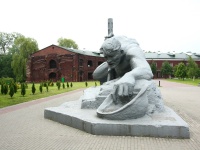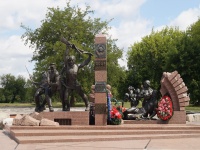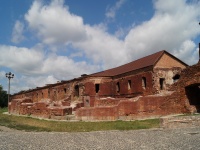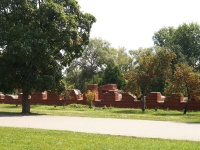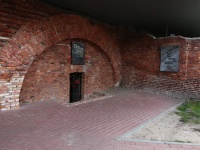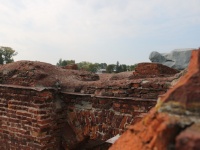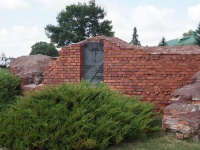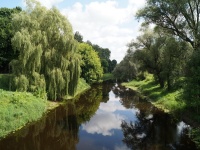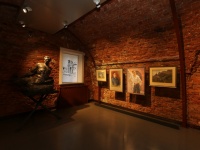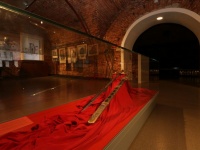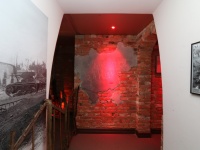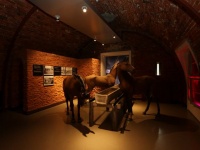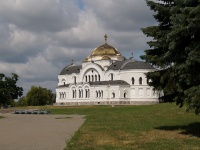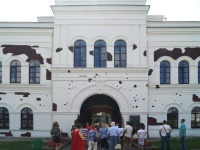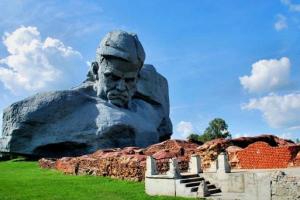Brest Fortress is one of those places that should be visited in Belarus, and the largest tourist attraction in the city of Brest. After the war the castle was completely restored. On its territory to perpetuate feat quarterbacks in 1969-71 a memorial complex. Sculptors - A.Kibalnikov, A.Bembel, V.Bobyl, architects - Korolev, V.Volchek, V.Zankovich, Yu.Kazakov, O.Stahovich, G.Sysoev. Architectural and sculptural ensemble of the memorial includes the main monument, a bayonet-obelisk sculpture composition «Thirst», Ceremonial area, 3 rows of memorial plates with burials of the dead, ruins and the surviving buildings of the fortress, museum.
Memorial begins with a monumental entrance in the form of a huge star cut in the concrete block. Here the song A. Alexandrov «holy war» and the government report on the attack on the Soviet Union troops Nazi Germany.
The compositional center of the ensemble - The main monument, which is a bust of the soldier against the backdrop of the developing banner. The specific episodes and events of the heroic defense told high relief located on the back side of the monument. At the foot - the ruins of the former site of the Engineering Management and the hero-cities. In-depth square of red and black granite in the bowl of a star eternal flame burns.
100-meter obelisk «Bayonet obelisk» is visible from any point of strength and composition to the right of the main monument. Below are three tiers of memorial plates, where the dead are buried ostanki1020, the names of 275 soldiers, commanders of the Red Army and the families immortalized.
Monument «Thirst» depicts a Soviet soldier, who, relying on the machine, the last effort to try to reach out to the river and scoop up the helmet of water. The monument is dedicated to the courage of the defenders, who, without food and water for many days kept the defense. One of the dramatic pages of Brest Fortress - an acute shortage of water. Water supply has been disabled on the first day of the war, and in the summer of that year stood unusually hot. Puffs of smoke, burning gunpowder filled the horizon. The blackened faces of the soldiers, parched with thirst lips testified about the incredible suffering of the people. The water was needed to cool the machine guns, the wounded, women and children - all participants of Defense. Approaches to water fired at night floodlights illuminated the shore. A lot of men and officers were killed while trying to extract the precious drops. After the war, on the banks of the rivers found punched helmets, water bottles, cups and the remains of the dead. The figure of a soldier crawling to the water with his helmet in hand, leaves no one indifferent.
The center of the memorial is the Ceremonial area, which hosts public events, including a rally in Victory Day (May 9), memorial day (June 22), taking the oath of young recruits Brest garrison, dedication to the students and the students, and others. Evening art and decorative illumination on February 23, May 9, July 3 and other dates on the orders of the director of the memorial.
At the memorial located in the Citadel of St. Nicholas Garrison Temple XIX century and a branch of the regional museum - Museum of Art. In 2011, the district opened the gate Terespolsky sculpture «Heroes of the border, women and children in the courage of his immortality paced.»
There is an exposition «The Army Club» in the powder keg on the Kobrin fortification, in which the pre-war atmosphere and the entourage of the club of the 98th separate anti-tank battalion of the artillery battalion was recreated. The exposition offers a look not only at the heroic defense, but also on the peaceful life of military personnel.
